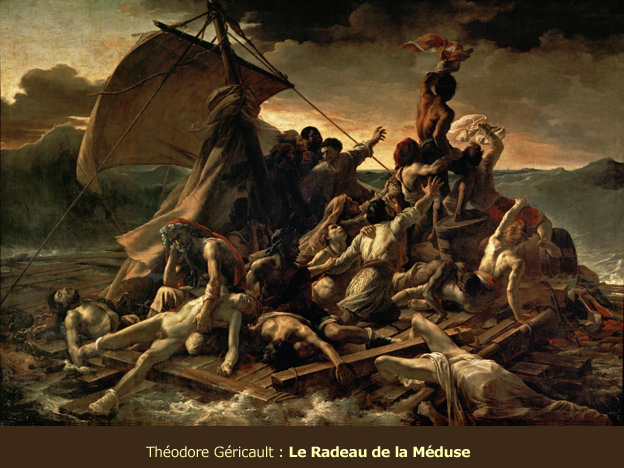|
The Speck in the Ocean
As Joseph Conrad's Mr Kurtz lies dying, he utters, "The horror, The horror..." The Méduse was a French naval frigate which ran aground off the coast of West Africa in 1816. The survivors built a raft and in the thirteen days before they were rescued, virtually all of them perished. The worst thing was the practice of cannibalism. Artistic conventions of the day prevented a more gruesome image.
Apparently Théodore Géricault was fascinated by the event. It had become an international scandal largely due to reports of gross incompetence on the part of the ship's captain. What is fascinating about the picture is the theatricality of the composition which removes the gore, giving us instead, a perfect allegory.

The rags being waved wildly make a line to a vertical dot rising on the horizon. This is the minimal gesture that takes the work into the realm of the profound. In this case there are no words for certain stupefying intangible thoughts that the imagery produces about the power of art. The subject matter is raw and this makes the necessary link between courage and Romanticism; a desperate search at the extremities and at the rock bottom of fundaments. Still resisting graphic depiction, by a borrowed route, it was the departure of a train carrying ideas that would permit the explorations into the prohibited zones of emotional life. Surmising that this train took visual arts on a roundabout to the horror movie theatres and is now carrying us through the pornographic imagery of sex we have today, the sunset speck in the ocean representing the sole hope of a last-minute rescue gives a clue to what art might be for.
|